#American Motors Javelin
Explore tagged Tumblr posts
Text




American Motors Javelin SST "Go Package," 1970. The 1970 Javelin was a one-year-only design featuring a new front-end design with a broad "twin-venturi" front grille incorporating the headlamps. The bonnet had dual air intakes and a functional Ram Air system with the Go-Package which came with either a 360 or 390ci 4-barrel V8 engines. This was the final year for the first generation Javelin
#American Motors Javelin#AMC Javelin#American Motors Javelin SST#Go Package#1970#first generation#dead brands#AMC Javelin SST “Go Package”#pillarless hardtop
181 notes
·
View notes
Text
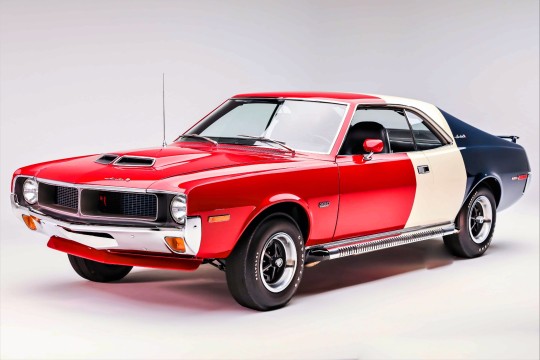
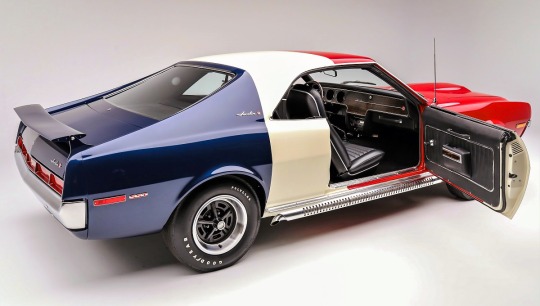
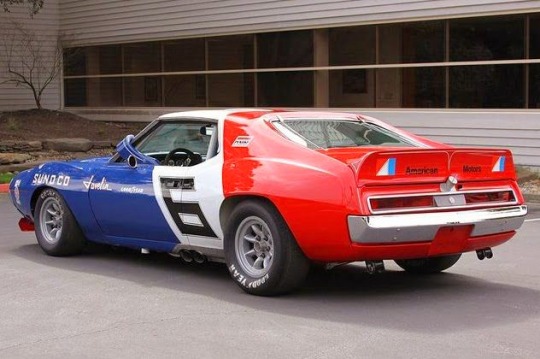
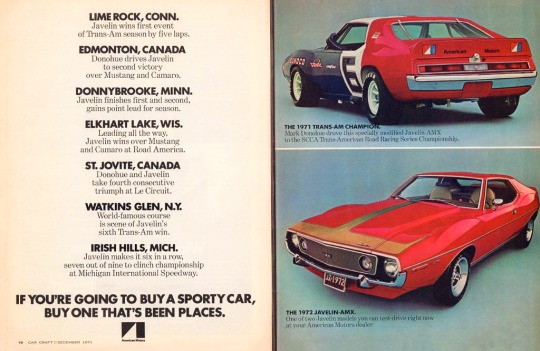
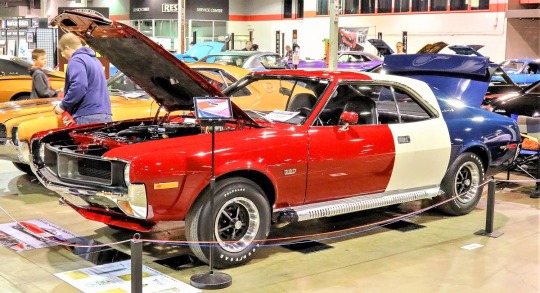
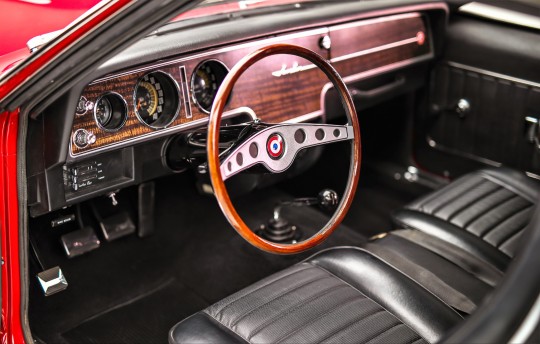
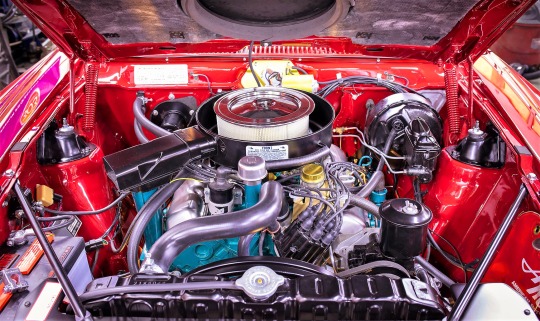

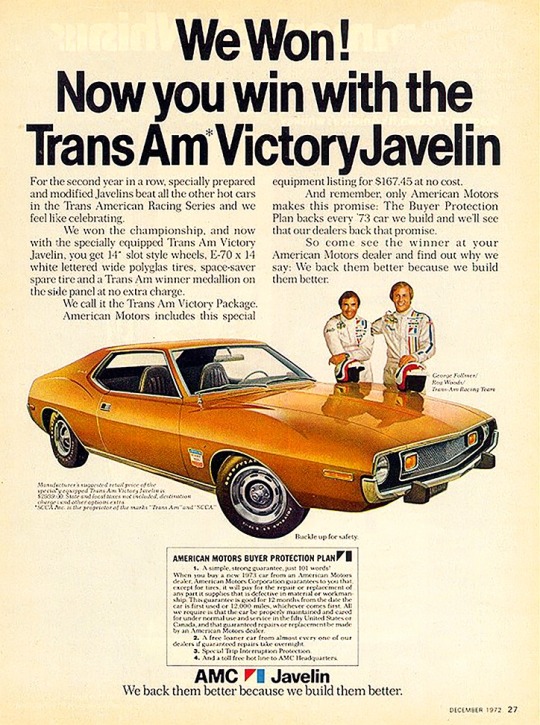
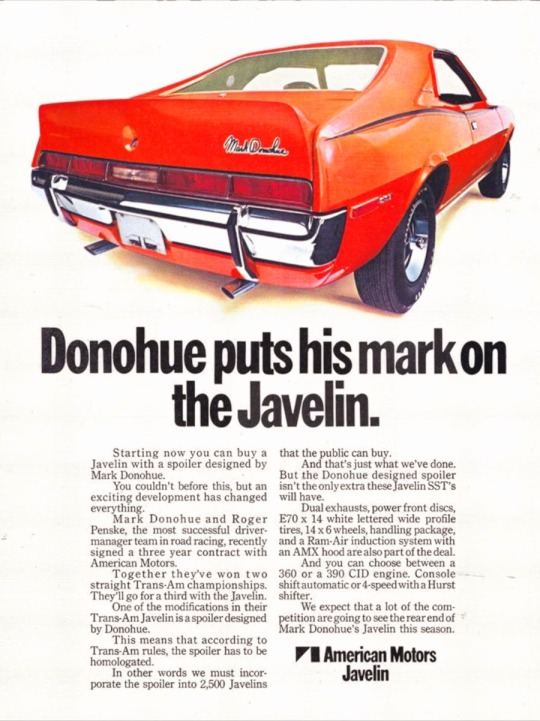
🇺🇲 Step back in time and experience the roar of the iconic AMC Javelin, a true legend of American muscle cars! Introduced in 1967 by American Motors Corporation (AMC), the Javelin was a front-engine, rear-wheel-drive, two-door hardtop automobile manufactured across two generations, spanning from 1968 through 1970 and then from 1971 through 1974 model years. It was designed to compete in the pony car market segment against rivals like the Ford Mustang and Chevrolet Camaro.
🚗💨 The AMC Javelin burst onto the scene in 1968, showcasing a sleek design and powerful engines. Styled by Dick Teague, the Javelin offered a range of trim and engine levels, from economical pony car variants to high-performance muscle car models. Its distinctive appearance, featuring a long hood and aggressive stance, turned heads on the streets and racetracks alike.
🏭 Besides being manufactured in Kenosha, Wisconsin, Javelins were also assembled under license in Germany, Mexico, the Philippines, Venezuela, and Australia, showcasing its global reach. American Motors even offered discounts to U.S. military personnel, leading to many Javelins being exported overseas.
🛞 Under the hood, the Javelin packed serious power. It was available with inline-six engines or potent V8s, delivering thrilling acceleration and speed. The AMX variant, equipped with a 6.4-liter V8, boasted over 300 horsepower!
🏆 The AMC Javelin wasn't just about looks—it excelled on the track too. It competed in Trans-Am racing, demonstrating its speed and agility. In fact, the second-generation AMX variant was the first pony car used as a standard vehicle for highway police car duties by an American law enforcement agency. Today, the Javelin's unique style and racing heritage make it a sought-after classic among collectors.
💔 By 1974, the automobile landscape had shifted. While other manufacturers downsized engines in response to changing market demands and fuel shortages, the Javelin's big engine option continued until production ceased in November 1974 amidst the Arab oil embargo and declining interest in high-performance vehicles.
🦅 The AMC Javelin embodies the spirit of American muscle cars, blending style, performance, and affordability. It's a timeless classic that continues to capture the hearts of car enthusiasts everywhere. Get ready to hit the road and experience the thrill of the AMC Javelin!
#brits and yanks on wheels#retro cars#transatlantic torque#vehicle#cars#old cars#brands#companies#automobile#american cars#amc#american motors#american muscle#amc javelin#javelin#muscle car#pony car#race car#trans am#old car#classic cars#car#american auto#automotive#chevrolet camaro#chrysler#wisconsin#kenosha#made in usa#ford mustang
305 notes
·
View notes
Text
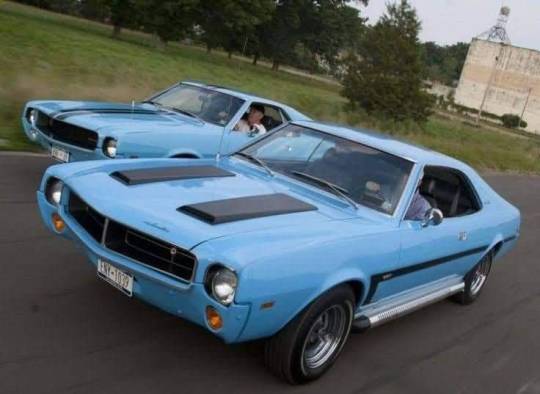
269 notes
·
View notes
Text

From the car files: a 1972 American Motors model line ad.
#vintage advertising#american motors#amc#70s cars#1972 gremlin#vintage cars#classic cars#the 70s#the 1970s#1972 hornet#1972 javelin#american cars#1972 cars
11 notes
·
View notes
Text
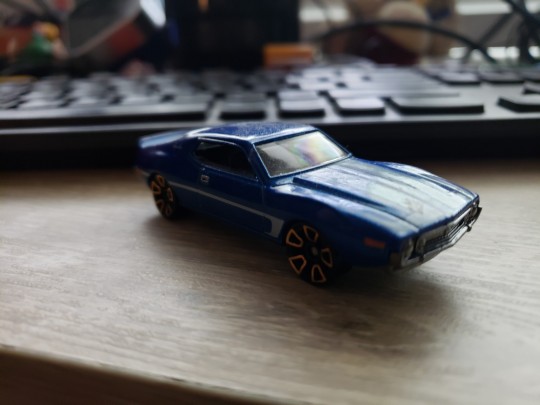
Die Cast Car of the day: 1971 AMC Javelin AMX by Hot Wheels #toy #toys #cars #diecastcars #AMC #americanmotorcompany #amcjavelin #1971amcjavelinamx #hotwheels
2 notes
·
View notes
Text

Classic AMC AMX
5 notes
·
View notes
Text

Back in 1973 Motor Trend ran a 6-car road test of performance cars at Ontario Motor Speedway. The goal was to find the highest top speed for an American 4-passenger car. The cars were as follows: Dodge Charger 440, Chevy Laguna 454, Ford Mustang 351, Buick GS Stage 1, AMC Javelin AMX 401, and the Trans Am SD-455. The AMX was the only car with a 4-speed.

Gear ratios ranged from 3.08 to 3.54 (the Trans Am was equipped with 3.42 gears). The winner was the Trans Am, clocking in at 124 mph, followed by the Dodge Charger at 121 mph, the Mustang and Laguna at 118 mph, and the Buick GS and AMC AMX at 115 mph. The Trans Am SD-455 was rated at 310 hp, but this was the pre-production version and all production models would be rated at 290 hp. Sports cars were not included.

The results chart is proof that stories of then-new cars going 140+ mph off the showroom were sometimes exaggerated. Wind resistance is one of the major factors in obtaining top speed, and 1973-era were not exactly aerodynamic marvels. - MCN
#Dodge Charger 440#dodge charger#dodge#charger#Chevy Laguna 454#Chevy Laguna#chevy#454#laguna#Ford Mustang 351#Ford Mustang#ford#mustang#Buick GS Stage 1#buick gs#buick#AMC Javelin AMX 401#AMC Javelin AMX#AMC Javelin#AMC#Javelin#Trans Am SD-455#trans am#pontiac#car#cars#muscle car#american muscle#mopar#moparperformance
49 notes
·
View notes
Text



Here's a 1973 American Motors Javelin 2-Door Coupé in Plum Metallic paint.
16 notes
·
View notes
Text
The U.S. defense industrial base just got a $20 billion shot in the arm from the national security supplemental bills passed by Congress last week. But although officials and experts believe the funding will provide a much-needed jolt to military production and help open up new factory lines, some say it’s still not enough to respond to China, Russia, and terror threats at the same time.
“We have begun—begun—to rebuild the industrial base with the supplementals,” Bill LaPlante, the Pentagon’s acquisition chief, said at an event last week. “Calling it a wartime footing, no.”
The biggest need? Money. Officials and experts say that the United States needs more of it, lots more, to make the real investments. At the peak of World War II, the United States was spending nearly 40 percent of its GDP on defense. It’s down to less than a tenth of those spending levels now. And the need to spend more has gone up with the Chinese spending more—and with Russian factories working around the clock.
“It’s still shy by quite a bit [for] what you would need to get our stockpiles in the right shape, get our industrial base in the right shape, help the Taiwanese, and get the Ukrainians in a position that they can get some leverage in negotiations,” said Jeb Nadaner, a former U.S. deputy assistant secretary of defense for industrial policy. “If the benchmark is against the calendar and the clock, we’re still falling behind every month. And that can’t go unnoticed by China.”
But the jolt will allow the United States to surge artillery production and solve key bottlenecks.
One is the production of solid rocket motors used for everything from Javelin anti-tank weapons that can hit a tank from a little over a mile away to intercontinental ballistic missiles that can propel warheads across the Atlantic and Pacific oceans if a U.S. war with Russia or China ever went nuclear.
Aerojet Rocketdyne, which was recently bought out by L3Harris Technologies for nearly $5 billion, was one of only a few suppliers. But the supplemental gives several billions of dollars for companies, such as Orbital ATK, to expand their solid rocket motor facilities.
And it provides money from the Defense Production Act—the same law that Washington used to force U.S. manufacturers to produce more masks, gloves, and face shields during the coronavirus pandemic—to build out a second tier of rocket motor suppliers, including X-Bow Systems in Texas; Ursa Major in Colorado; and Adranos in Mississippi, which was recently bought out by defense technology company Anduril. The idea is to fast-track work that wasn’t going to be done until at least 2026, if not 2027 or 2028, according to a congressional aide, who spoke on condition of anonymity to talk about military contracts that hadn’t been made public.
There’s also about $100 million to help Williams, one of the only American makers of cruise missile motors, speed up production in Michigan. Those motors are used in the long-range anti-ship missile that might one day help Taiwan fend off Chinese landings; the armor-piercing joint air-to-surface standoff missile; the Tomahawk land attack missile that is the U.S. Navy’s weapon of choice; and the Harpoon missile that the Ukrainians have used in the Black Sea.
There’s also money to build factories for ball bearings, printed circuit boards, and other subcomponents for the $311 billion that the Pentagon wants to spend in the upcoming year to develop new weapons. Processor assemblies, castings, forgings, microelectronics, and seekers for munitions have been major bottlenecks. And there are recruitment and attrition problems almost across the board, from welders at shipyards to rocket engineers, a generational problem that might need vocational-training fixes at the high school level and up.
But with some Democrats pushing back on the Biden administration’s $850 billion Pentagon budget proposal as too costly, there’s also a focus on smaller attritable capabilities that don’t need a whole lot of start-up capital or defense industrial muscle to get moving.
There’s a ton of counter-drone money, about $600 million, that will go toward Coyotes, a small drone capable of intercepting other drones, and Roadrunners, an air defense munition that takes off vertically—just like the F-35 fighter jet variant flown by the U.S. Marines.
Some members, such as House Armed Services Committee ranking member Adam Smith, have advocated for ending production of ground-launched nuclear weapons. Congress is also trying to scrap old weapons, including F-15 fighter jets, the A-10 Warthog aircraft, and littoral combat ships used by the Marines. Smith is even curious about using microwaves as the next generation of air defense instead of directed energy.
The United States is also torn between near-term needs, like 155 mm artillery ammunition, and long-term needs—like a sixth-generation fighter jet that will follow the F-35. “There are going to have to be some trade-offs between preparing for a near-term fight and near-term deterrence and probably making some trade-offs on some next-generation weapons systems,” said Seth Jones, the senior vice president and director of the international security program at the Center for Strategic and International Studies in Washington, D.C.
Russia’s invasion of Ukraine is still going to be a major factor in setting requirements for the U.S. military. “We’re going to be selling 155 [mm] like a drunken sailor for a few years,” said Mark Montgomery, a senior fellow at the Foundation for Defense of Democracies. “The Western alliance needs the U.S. to crank 155 [mm] for a decade.”
Other weapons used in the early days of Ukraine’s defense of Kyiv are likely to hit a plateau in production. Those include Javelin systems; the High Mobility Artillery Rocket System, or HIMARS; and Stinger anti-aircraft missiles, which the Pentagon sent to Ukraine in large numbers early in the war and are also included in the supplemental, but which have taken on a secondary role as the fight has been bogged down in trench warfare for months and months.
Allies can help solve some of the bottleneck problems. The United States is co-developing new glide-phase interceptors with Japan as well as co-producing guided multiple-launch rockets with Australia and guidance-enhanced missiles for Patriot air defenses with the Germans. But after the political fights that took the supplemental more than six months to get through Congress, LaPlante and other officials acknowledged that the United States now has an image problem in showing itself to be a reliable torch-bearer for the global defense industrial base.
There’s another major production plateau that members of Congress are trying to stave off: attack submarines. The Biden administration’s proposed budget for the upcoming year slashed funding for one attack submarine. For years, producing two a year had been the standard, even though U.S. shipyards only produce between 1.2 and 1.4 Virginia-class submarines each year, and new variants are 24 to 36 months behind schedule.
And there are dependencies that are difficult—if not impossible—to cut. The United States still buys a significant amount of its titanium from Russia, which is used for everything from landing gears to tank armor, and is only slowly ramping up production of rare earth minerals, which are dominated by China. But the U.S. military’s weapons are ravenous for rare earths: The F-35 needs 900 pounds of rare earths to run, and the Virginia-class submarines need more than 10 times that amount. The military also needs lithium ions used in advanced battery production that China also dominates.
Where Congress and the Pentagon are having more trouble jolting the defense industrial base to life is for weapons that might be used in the Indo-Pacific. The U.S. Army’s precision strike missile that would be used to hit incoming Chinese ships from more than 600 miles out, for instance, is still being developed—the seeker that would find enemy vessels isn’t finished—so there’s no way to ramp up capacity, at least not yet.
But before the United States ramps up industrial capacity, some members of Congress want the Pentagon to take a good, hard look at what’s already on the books.
“Where can we look within the budget and say, wouldn’t we be better to spend more money on these things that we really do need?” Smith said. “So before I get into a discussion about, ‘Gosh, it’d be great if we had another $50 billion,’ where are we spending the money that we have? I think that’s the first question.”
8 notes
·
View notes
Note
What's your favorite classic car?
Ahh whoever you are you had to ask that. There are so many cars that I love which are totally different from each other, it wouldn't be fair to compare and favor between them. Every kind of car is good in its own right, it's apples and oranges.
There's a lot of muscle cars that I like but my favorite I think would probably be the American Motors Javelin AMX, second generation (1971-1974). AMC is a whole topic but they were different. I'll have to post other kinds of cars as they come to mind. I'm not sure what my favorite station wagon is.

17 notes
·
View notes
Text
1972 American Motors Javelin AMX



Bad Choice Road
2K notes
·
View notes
Text





American Motors Javelin SST Trans Am Edition, 1970. AMC celebrated the heroic achievements of its Trans Am series racing by making 100 "Trans-Am" versions of the Javelin. They replicated the appearance of the race cars and were powered by the 390ci (6.4 L) V8 engine with heavy-duty and performance features along with the front and rear spoilers.
#American Motors#American Motors Javelin SST Trans Am Edition#AMC Javelin SST Trans Am Edition#special edition#limited edition#1970#dead brands#AMC Javelin#390ci V8#trans am
299 notes
·
View notes
Text
The car is orange and the number is 74. Furthermore, I have the strong sense that this is the side of a later Dodge Charger painted in Big Bad Orange and there's some history to this.

Chrysler owns Dodge and back in the 70's there was the TV show The Dukes of Hazzard featuring a Dodge Charger called the General Lee. The General Lee was painted in Big Bad Orange, however Big Bad Orange was not a Chrysler/Dodge color.

Rather, Big Bad Orange was actually a color belonging to American Motors (AMC) which they had been using on their cars like the Javelins and AMXs. There was a set of three color options bearing the Big Bad name; Big Bad Orange, Big Bad Blue and Big Bad Green.

In the 1980's AMC was caught in a bind for money after a poor decision to partner with French car manufacturer Renault. In 1987 AMC was bought out by Chrysler and dissolved so they could acquire the Jeep brand. Chrysler still holds onto the rights for AMC and its properties today, therefore they can now paint Dodge Chargers in Big Bad Orange from the factory. The General Lee is kind of synonymous with the Dodge Charger now, so selling a Charger in the General Lee's color especially appeals to Dukes of Hazzard and Charger fans.
So yes this is 100% orange and yes I just wrote this whole thing based on a car color. I love AMC.
(I've also seen Chrysler begin to cannibalize AMC's remaining properties as a space parts bin, like using the Hornet and Rebel names as of recent. If I had the money I would buy AMC from its current purgatory and revitalize the company to how it used to be with any improvements. American Motors was different).
is this orange or yellow.
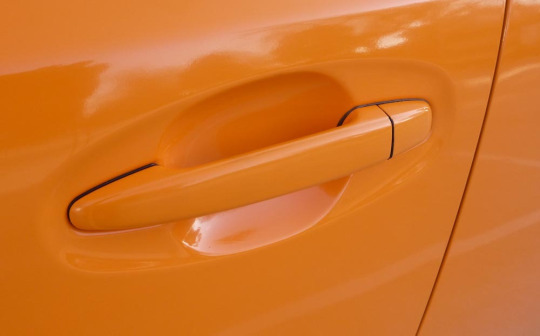
361K notes
·
View notes
Text

Die Cast Car of the day: 1971 AMC Javelin AMX by Hot Wheels #toy #toys #cars #diecastcars #AMC #americanmotorcompany #amcjavelin #1971amcjavelinamx #hotwheels
3 notes
·
View notes

